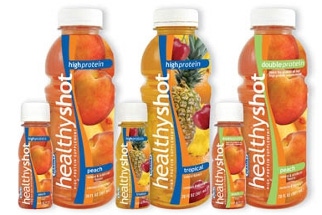Full-body sleeve labels are jeopardizing PET bottle recycling
January 30, 2014


Shrink sleeve label on PET bottles
The Assn of Postconsumer Plastic Recyclers (APR), the trade association of companies that recycle post-consumer plastics in North America, has issued a new guidance document to deal with the growing issue of full-body sleeve labels on PET bottles. The Sleeve Label Substrate for PET Bottles Critical Guidance document addresses several key label design issues that affect the removal of the labels in recycling process and quantifies the effects of label residue on PET bottle recycling. Through testing and data interpretation, the document helps packaging decision makers select label substrates and materials more compatible with PET bottle recycling than some currently offered.The new guidance protocol streamlines the testing for full-body labels on PET bottles, omitting some tests as not relevant to the labels and expanding on other subjects in the well-established PET Bottle Critical Guidance Document in an effort to reduce testing cost and increase protocol usage.
"We see a tremendous amount of concern regarding the presence of full sleeve labels on PET bottles and the impact of the labels on the ability of bottles with such labels to be reclaimed using existing recycling technology,' says APR's president, Steve Alexander. "There are some statements that reclaimers are able to process PET bottles with shrink-sleeve labels without problems. Not exactly. The vast majority of PET reclaimers report that the labels are a serious problem for recycling. Most PET reclaimers, drawing from many sources of raw material and with a variety of process designs, find the sleeve labels are a serious economic detriment. Label density is the one characteristic that testing shows can lead to removing label contamination from PET recycling. Labels that sink in water after hot water washing are labels that cause serious trouble. If it sinks, it is bad. We are optimistic that this enhanced protocol provides packaging designers the clear guidance to mitigate this contamination problem"
Dave Cornell, APR's technical director, says, "While APR feels that sleeve labels on PET bottles can be helpful, they are mostly a problem to PET recycling. The problem starts at the local municipal sorting center, the MRF. The automatic sorting machines often cannot see through the labels to correctly identify the PET resin. This means a loss of revenue to the local collection system and loss of raw material to the reclaiming community. PET recyclers face added problems because many companies with modern pre-wash systems find the labels do not readily come off the PET bottles."
"Full sleeve labels are growing in popularity with brand companies," Cornell continues. "The labels are a mixed blessing for PET reclaimers as the labels are free of adhesive and generally mean unpigmented plastic bottles, but new problems are created such as proper identification of the bottle resin and removal of the label from the bottle and recycle product. This protocol of testing and data guidance addresses some key issues including quantitative measurement of the tendency of label material residue to clump.
"Clumping is a serious issue," Cornell says. "This protocol begins the effort to address all of the issues."
The new guidance document is based, in part, on comprehensive examination of the impacts of label substrate choices as investigated by Plastic Forming Enterprises under contract to APR.
APR's Critical Guidance Documents are part of its larger Champions for Change program, in which the association works with other industries to achieve higher quality and more economical recyclate. The voluntary program provides clear direction for packaging innovators and possible recognition for those whose innovations meet or exceed the guidance.
Source: Assn of Postconsumer Plastic Recyclers
.
About the Author(s)
You May Also Like


